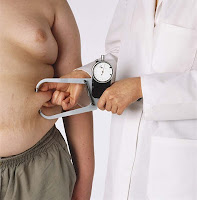Watercress is an aquatic plant known for its vivid green color and unique peppery flavor. It has been around since ancient times and was widely used by Persians, Romans, and Greeks. Ancient rulers found their soldiers were in better condition when watercress was part of their daily diet. Even Hippocrates grew watercress in natural springs around his hospital and used it to treat blood disorders. Today, watercress can be found mixed in with salads, added to sandwiches, and a main ingredient in Chinese watercress soup.
Fortified with more than 15 essential vitamins and minerals, watercress is increasingly seen as a powerful cancer-fighting superfood, with a growing
body of supportive scientific studies and discoveries. In addition,
watercress is one of Mother Nature’s most nutrient dense vegetable,
capturing a perfect 1000 score on the ANDI nutrient density scale. It's as close to a perfect food as there is!
Even better yet, researchers have been studying the effects of consumption of watercress and the prevention of some of the damage caused by high intensity exercise. A recent study by scientists at Edinburgh Napier University and the University of Ulster shows watercress helps alleviate the natural stress put on our body by a workout. Study participants were given 85 grams (amount of a small bag) of
watercress daily for eight weeks and performed high intensity exercise
on the treadmill. This study, published in the British Journal of Nutrition, found that "...consuming a relatively small amount of watercress each day can
help raise the levels of important antioxidant vitamins which may help
protect our bodies, and allow us to enjoy the rewards of keeping fit.
It's an interesting step forward in sports nutrition development and
research.", according to lead researcher Dr. Mark Fogarty. Not only did study participants benefit from the addition of watercress to their daily diet, but Dr. Fogarty and his team also found that consuming watercress just 2 hours prior to their workout experienced the same benefits as those who ate watercress for 8 weeks.
What does this mean to you? Watercress is an antioxidant-rich food and can help protect your body from daily wear and tear. In terms of nutrition, watercress is rich in vitamin A (from beta-carotene) and vitamin C, and
is a source of folate, calcium, iron and vitamin E. It also contains
useful amounts of vitamin K, thiamin, vitamin B6, potassium and iodine
and is naturally low in sodium. Due to its high water content (93%) it
is low in calories. It contains very little carbohydrate and fat but
provides some protein. Why not add it to your daily diet? Add this leafy green to soups, salads, and sandwiches. Reap the benefits of this nutrition powerhouse and protect against cellular damage from your workouts.
Spend a little more time in the produce department and fill your basket with leafy greens such as watercress, kale, collard and mustard greens. Experiment with recipes and find your taste for something new (or something old).
Edinburgh Napier University. "Leafy greens help prevent damage caused by a workout, study suggests." ScienceDaily, 25 Apr. 2012. Web. 25 May 2012











